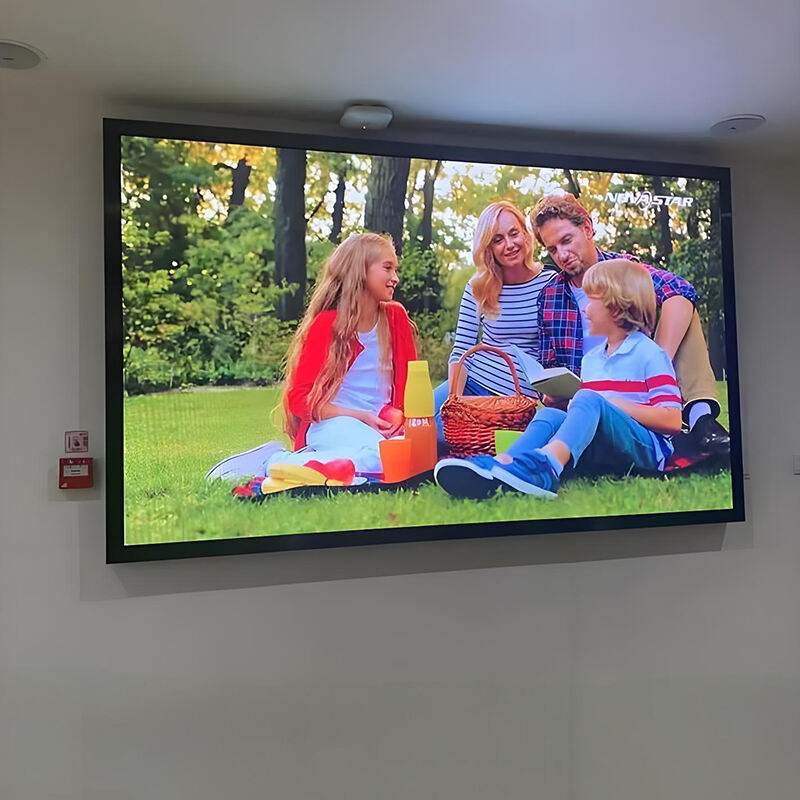הקדמה: הפלא הטכנולוגי שמאחורי תצוגות LED
הצגים LED (Dioda שולחת אור) שינו את תקשורת הוויזואלית, מפעילים הכל - מהכרזות פרסום צבעוניות ועד מסכים בפנימית ברזולוציה גבוהה. כיצרן מוביל של מסכי LED פנימיים וספק גROSSי, TU LED (מארת Shenzhen OuBo Electronic Technology Co., Ltd.) מומחכת בהיפוך טכנולוגיה זו עבור לקוחות B2B. עם יותר מעשור של נסיון במפעל, החברה מחברת ידע טכני עם פתרונות חדשניים, מציעה הכל - משירות OEM למסכים קבועים פנימיים ועד מערכות מלאות חיצוניות. בואו ניכנס לתוך המנגנונים שעושים את מסכי LED להבהיק.
המבנה הבסיסי של מסכי LED: אבני היסוד של קסם חזותי
אנבנסר לוח תצוגה עם LED מורכב משלושה רכיבים מרכזיים:
פיקסלים LED: היחידות הקטנות ביותר של השדרור אור, כל אחת מכילה דיאודות אדומות, ירוקות וכחולות (RGB) שמתקבצות כדי לייצר מיליוני צבעים. ייצור דיוק גבוה של TU LED מבטיח ביצועי פיקסל עקביים, דבר חיוני איכות מסך LED פנימיים לגROSS.
לוח חשמלי: מנהל את התפלגות החשמל וההובלה של אותות לכל פיקסל. לוחות החברה עוברים בדיקות תקינות קשות, כולל זקנה של 72 שעות, כדי להבטיח אמינות.
ארון ועטיפה: עבור מסכים חיצוניים, קליפות מוגנות מים ברמת IP65 מגינים על המרכיבים הפנימיים מפני תנאים קשים, בעוד שארונות פנימיים מדגישים עיצוב דק ותפעול קל.
איך פיקסלים LED יוצרים תמונות: המדע מאחורי צבע ובrightness
הפעלת פונקציונליות של מסך LED מסתובבת סביב הפעלת פיקסלים:
עיקרון האלקטרוליומינסנס: כאשר זרם חשמלי זורם דרך LED, אלקטרונים מתמזגים עם חורים בחצי מוליך, משחררים אנרגיה כאור. תצוגות פיקסלים קטנות של TU LEDs P0.9-P1.25 מנצלות את זה כדי להשיג רזולוציה גבוהה מאוד ליישומים מקומיים.
PWM (Modulation של רוחב נפץ): משליט את בהירותו על ידי שינוי משך הדחף החשמלי. טכנולוגיה זו קריטית במסכי השכירה של TU LED, מה שמאפשר התאמת חלקה של בהירות לסביבות שונות.
השפע향 של פיקסל: פיצ'ים קטנים יותר (לדוגמה, P2.6) הם האידיאליים לצפייה קרובת בתצוגות קבועות בתוך הבית, בעוד שפיצ'ים גדולים יותר (P10) מתאימים לצפייה מרוחקת בצג חוץ.
מערכותרכות שליטה: המוח מאחורי פעולות הצג LED
הביצוערשלן של צג LED תלוי במערכת השליטה שלו:
מַעֲבִירֵי וידאו: מכשירים כמו סדרת Taurus של NovaStar ממירים אותות קלט (HDMI, DP) לפקודות פיקסלים, מה שמבטיח עיבוד תמונה בזמן אמת עבור קירות וידאו.
כרטיסי שליחה וקבלה: מערכות שליטה SDK של TU LED וכרטיסי קבלה DH7508-S מנהלים את הפצת הנתונים על פני הצג, עם תמיכה בשילוב מסכים גדולים ללא אובדן אות.
השתקפות תוכנה: פתרונות תוכנה מותאמים מאפשרים מוניטורינג מרוחק, תזמון תוכן והעדכנות בזמן אמת, תכונה חשובה עבור לקוחותי OEM של צגי LED פנימיים.
טכנולוגיהרכות LED פנימיות לעומת חוצניות: מותאמות לצרכים שונים
TU LED מבדילה בין הצעותיה בהתאם לסביבה:
דיסплеים LED פנימיים: להעדיפו איכות גבוהה ועמידות לעיניים, תוך שימוש בטכנולוגיית SMD (Surface Mount Device) עבור מעברים צבעוניים חלקים. כספק של מסכי LED פנימיים, החברה מציעה פתרונות גROSS כמו דיספליי רשת LED שקוף על-גבי שטח למיזמי ארכיטקטורה.
דיסплеים LED חיצוניים: כולל עמידות במערכת IP65 נגד מים, בהירות גבוהה (5,000+ ניטס) והגנה מפני קרני UV. דוגמאות כוללות מסך לוח פרסומות חיצוני P4.81, שהוצב בשימוש בכ-110+ מדינות לקמפיות פרסום.
היתרון הטכני של TU LED: מהמפעל ועד ההתקנה הסופית
כמְנַבֵּר מוסמך מפעל ללוחות תצוגה LED פנימיים , TU LED מבטיח עליונות טכנולוגית דרך:
פתרונות פתרונות מלאים: בנוסף לתאובנים, החברה מספקת מערכות שליטה, מקורות חשמל, תבליטים להתקנה ומוטות תומכים, מועילים למיזמי מפתח-למפתח.
הכרזות איכות: המוצרים עונים לסטנדרטים CE, RoHS ו-CQC, עם בדיקת 100% לפני השحن כדי להפחית כשלונות בשדה.
ייצור סקאלבילי: מפעל בגודל 8,000 מ"ר עם יכולת ייצור של יותר מ-5,000 מ"ר תומך בזמנות מסיביים עבור לקוחותים שוקליים של מסכי תצוגה LED.
מסקנה: שימוש בטכנולוגיית LED להשפעה עסקית
הבנת איך תצוגות LED פועלות מאפשרת לעסקים לקבל החלטות מובנות. בין אם אתה צריך תצוגת LED קבועה מקומית OEM או פתרונות פרסום חיצוני, המומחיות הטכנית של TU LED והגישה המפעלית הישירה מבטיחה ביצועים אופטימליים. פנה אלינו ב- [email protected] עבור שאלות סלולריות ותן לצוות שלנו להפוך את הרעיונות החזותיים שלך למציאות.
סיכום: מסכי LED משלבים בין מדעי חומרים לסגנון מדויק. כיצרן מוביל, TU LED גורמת לפיתוח זה, ומציעה פתרונות אמינים וחדשניים לכל צורך בתעשייה.
תוכן העניינים
- הקדמה: הפלא הטכנולוגי שמאחורי תצוגות LED
- אנבנסר לוח תצוגה עם LED מורכב משלושה רכיבים מרכזיים:
- הפעלת פונקציונליות של מסך LED מסתובבת סביב הפעלת פיקסלים:
- הביצוערשלן של צג LED תלוי במערכת השליטה שלו:
- TU LED מבדילה בין הצעותיה בהתאם לסביבה:
- כמְנַבֵּר מוסמך מפעל ללוחות תצוגה LED פנימיים , TU LED מבטיח עליונות טכנולוגית דרך:
- מסקנה: שימוש בטכנולוגיית LED להשפעה עסקית


